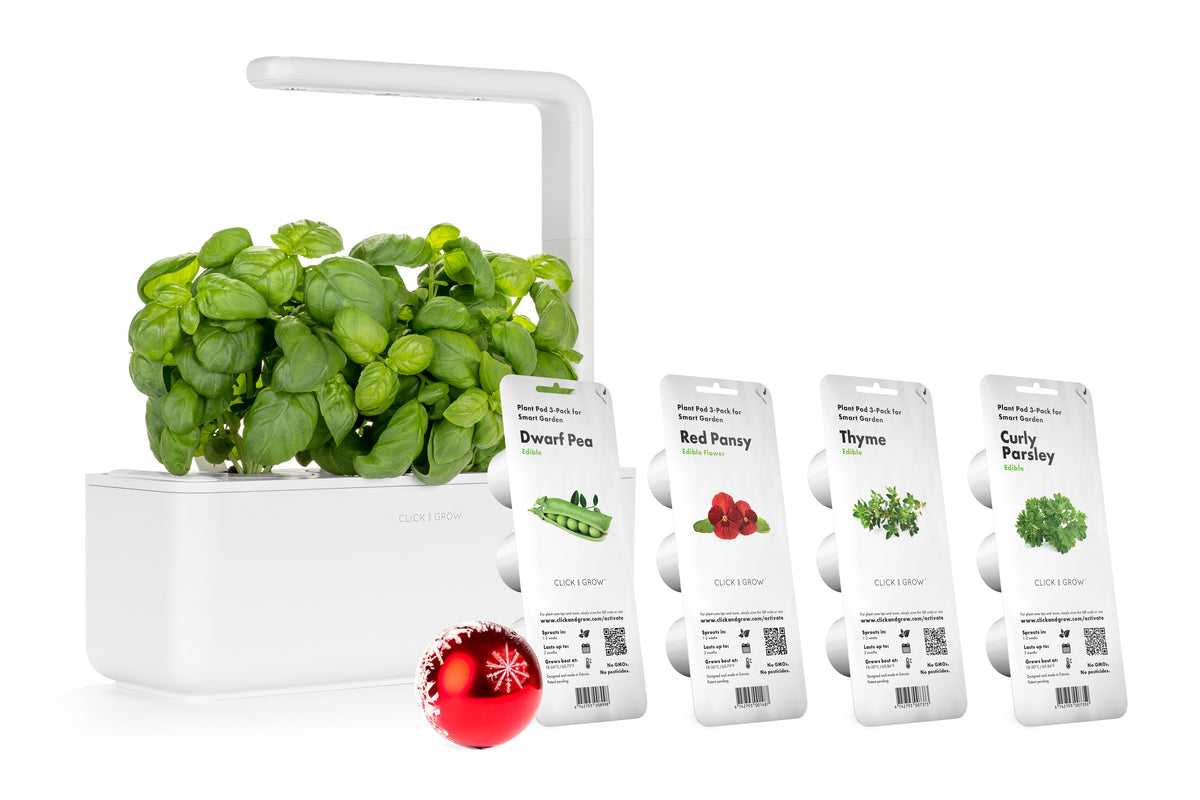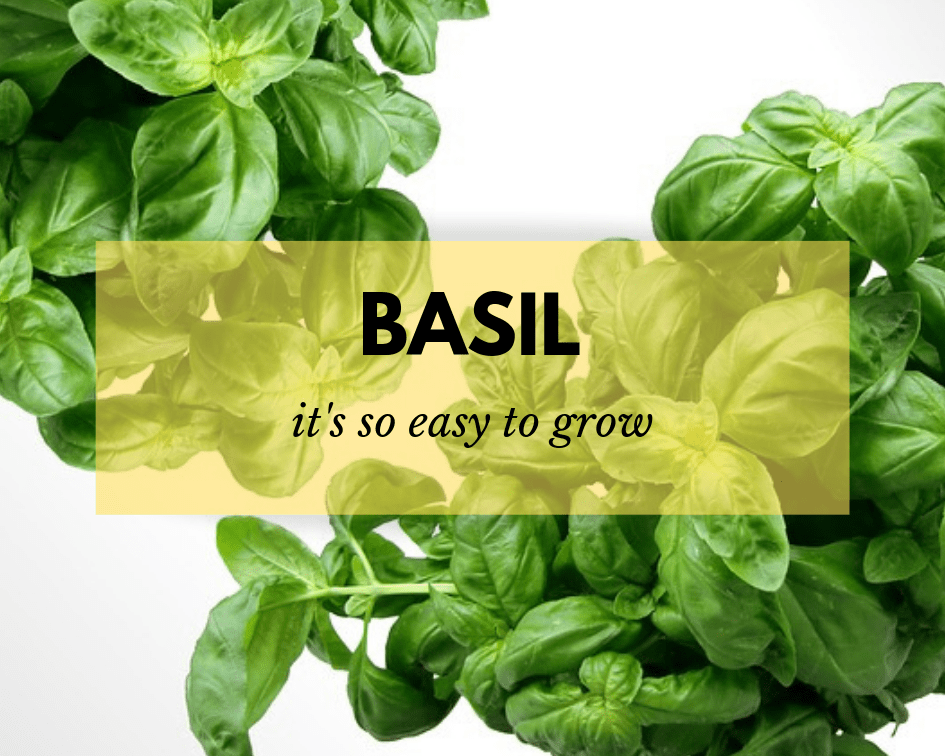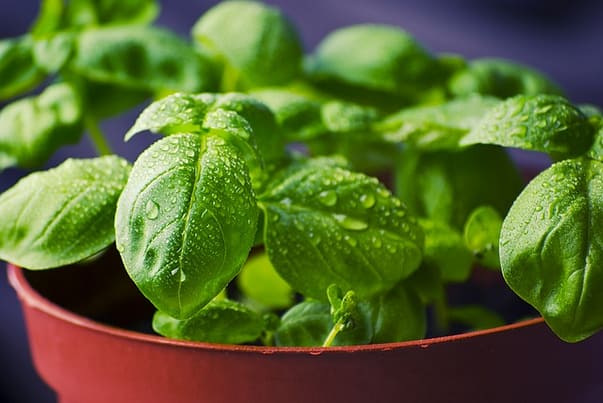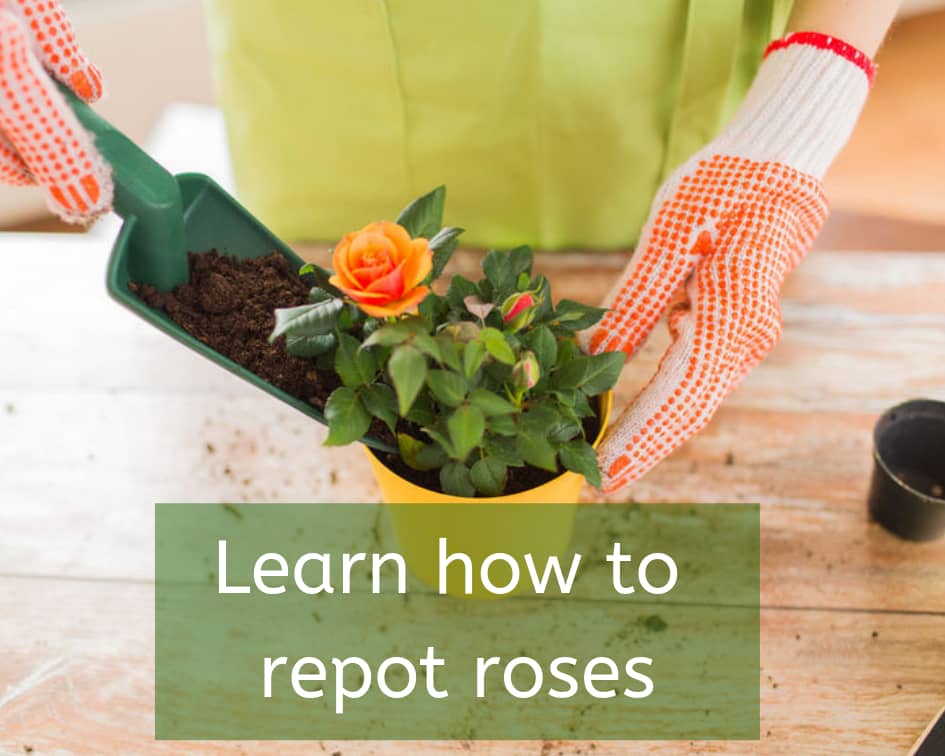This post may contain affiliate links. As an Amazon Associate we earn from qualifying purchases.
Because it’s versatile and so easy to grow, basil is one of the most popular herbs grown in home gardens and kitchens. You can either buy starter plants at the nursery or plant seeds, which germinate readily. Try the variety pack of basil seeds at Amazon.com. Some of these have amazing flavor.
When to water your basil plant
When you grow a basil plant, it’s important to keep the soil around the roots insulated so use some type of mulch to top-dress the soil. Pine needles, leaves or wood chips are all fine. A mulch bonus is that it discourages weeds as well.
As with most plants, a slow, deep irrigation is best. Give the basil an inch of water a week by using a soaker hose or drip irrigation. An inch of water is a lot more than it sounds. According to the folks at Fiskars,
it takes a little over 3 hours to deliver 1 inch of water with a 50 foot, 5/8-inch soaker hose hooked up to a faucet with a flow rate of 1/2 gallon a minute.
If that’s too much to wrap your brain around, run the hose for half an hour and then use a gardening trowel to carefully dig a hole next to the basil and poke around to get an idea of how moist the soil is. If it’s dry, keep watering in 30 minute increments until you figure out how long to run the hose or drip system. Then do it once a week.
Fertilizer for your basil plant
About two months after planting, if your basil isn’t growing at the rate it should, or if the foliage is a lighter green than it should be, apply 1/4 to 1/2 pound calcium nitrate per 100 square feet of bed. Check the Resources section at the end of this post for where to buy.
Sprinkle it across mulched soil, about 2 inches away from the basil plants. Ensure that the soil is moist and then water again after the application to soak the fertilizer to the basil’s roots.
Basil has a tendency to grow tall and skinny if you don’t take matters into your own hands. Pinch the growing tips off of new shoots while the plant is young. This encourages it to produce side shoots right below the pinched portion. The more shoots, the more basil leaves to go with those tomatoes you’ve got growing over there.
How to grow basil indoors
Growing basil indoors is a bit more labor-intensive, but having it handy to the kitchen is a cook’s bliss.
Use a planting mix that contains one part of perlite to two parts of a soilless potting mixture. Fill a planting pot (with holes in the bottom for drainage) with the mix, moisten it well and plant the basil.
Set your basil plant near a west- or south-facing window and ensure it receives at least five hours of sunlight every day. If you can’t provide that, grow it under lights for at least 14 hours a day. Amazon.com carries a huge variety of grow lights, from small to large. Consider an indoor herb gardening kit. This one, at Amazon, comes with a light that’s on a timer and it’s attractive enough to leave within reach, on the kitchen counter.
Water needs to be room temperature, so keep a jug of water in the pantry, dedicated to the basil plant. When you water, do so thoroughly, until excess water drains from the bottom of the pot. Keep the soil consistently moist — about the same moisture content as a well-wrung sponge. Allow the soil to dry somewhat between waterings in winter.
Fertilize basil in spring with a liquid, water-soluble fertilizer, at half the strength recommended on the label. We go the organic route with ours and use Fox Farm Big Bloom, (see the Resources section, below, for where to buy).
Don’t let the basil flower — pinch them off as soon as they appear.
Resources
We make a small commission if you click on a link and purchase a product.
Featured Image courtesy: Schilling2/Flickr




